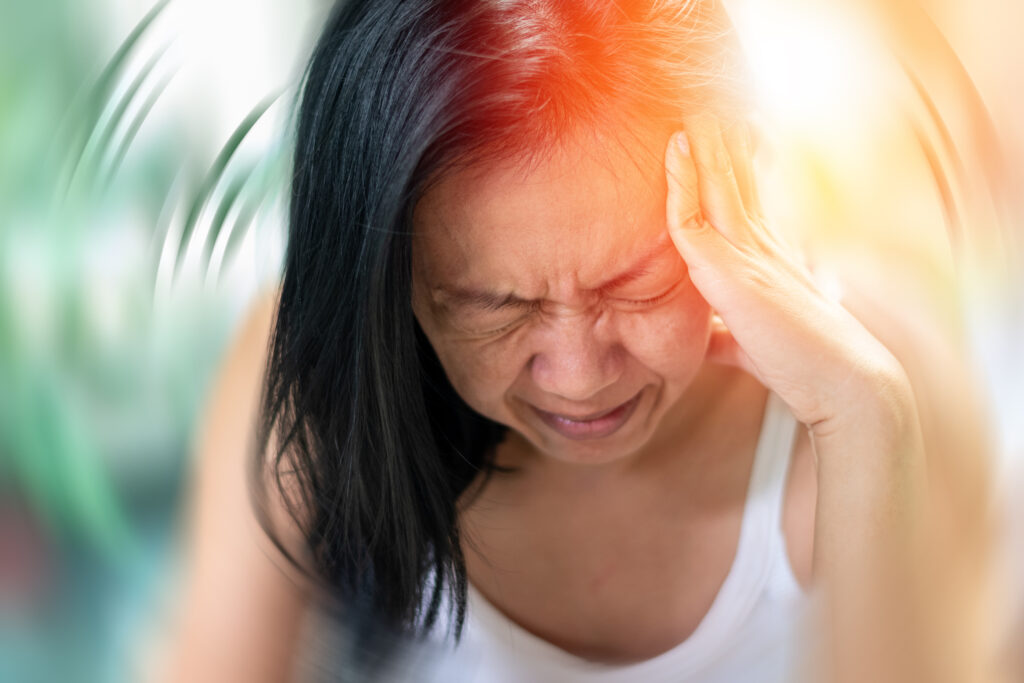Get a Head Start on Headache Disorders
There’s a pounding in your head, and you realize you’re about to have yet another headache. If you have recurring headaches, then you likely have a headache disorder. You might wonder if you’re having a regular headache, migraine, cluster headache, or something else. You might wonder if it’s caused by stress, tension, or by a health issue like high blood pressure. Take our quiz on headache disorders and get ahead of your next headache.
1. True or false? Headache disorders, characterized by recurrent headache, are among the most common disorders of the nervous system.
2. Which of the following is an example of a headache disorder?
A. Migraine
B. Tension-type headache
C. Cluster headache
D. All of the above
3. True or false? The long-term effort of coping with a chronic headache disorder can also predispose the sufferer to other illnesses, such as anxiety and depression.
4. Which of the following is NOT true of migraine headaches?
A. Migraines most often begin at puberty and affect those aged between 35 and 45 years the most, and they are more common in women.
B. Migraines are often accompanied by hair loss.
C. Migraines are caused by the activation of a mechanism deep in the brain that leads to release of pain-producing inflammatory substances around the nerves and blood vessels of the head.
D. Migraines are often a lifelong illness characterized by recurring attacks.
5. Which of the following symptoms characterize migraines?
A. A headache of moderate or severe intensity that can be one-sided, pulsating in quality, aggravated by routine physical activity, with a duration from hours to 2-3 days.
B. Head pain that includes nausea.
C. A headache with an attack frequency that is anywhere between once a year and once a week.
D. A headache including physical manifestations like an extreme sensitivity to light and sound; visual disturbances, such as an aura, flashes of light or blind spots; or other disturbances, such as tingling on one side of the face or in an arm or leg and difficulty speaking.
E All of the above
6. Though it varies from person to person, which of the following can trigger migraines?
A. Sudden changes in weather or environment, strong odors or fumes, loud or sudden noises, bright or flashing lights
B. Too much or not enough sleep, overexertion, head trauma, motion sickness
C. Emotions, stress, depression, anxiety
D. Low blood sugar, skipped meals
E. Tobacco use, hangovers, some medications, hormonal changes
F. All of the above
7. True or false? Tension-type headaches (TTHs) are the most common primary headache disorder.
8. Which of the following are true about tension-type headaches (TTHs)?
A. TTHs often begin during the teenage years, affecting three women to every two men.
B. The cause of TTHs may be stress-related or associated with musculoskeletal problems in the neck.
C. Episodic TTH attacks—which are described as pressure or tightness, often like a band around the head, sometimes spreading into or from the neck — usually last a few hours, but can persist for several days.
D. Chronic TTH, or headaches occurring on more than 15 days per month, can be unremitting and is much more disabling than episodic TTH.
E. All of the above
9. Which of the following is NOT true about cluster headaches (CHs)?
A. CHs are relatively uncommon, affecting fewer than 1 in 1000 adults and six men to each woman.
B. CHs are characterized by frequently recurring (up to several times a day), brief but extremely severe headaches, usually focused in or around one eye, with tearing and redness of the eye, the nose runs or is congested on the affected side and the eyelid may droop.
C. CHs are more common in women.
D. There are episodic and chronic forms.
E. None of the above
10. Which of the following are treatments for headache disorders?
A. Medications, such as analgesics, antiemetics, specific anti-migraine medications, and prophylactic medications.
B. Lifestyle modifications to avoid triggers
C. Efforts such as napping, laying down in a dark room, placing a cool cloth or ice pack on the forehead, drinking lots of fluid, and ingesting small quantities of caffeine
D. Non-drug therapies like biofeedback and relaxation training
E. All of the above
compiled by ERIKA ALDRICH / Resources: Information provided by The World Health Organization, National Institutes of Health, and the Mayo Clinic.
ANSWERS:
- True
- D. All of the above
- True
- B. Migraines aren’t typically accompanied by hair loss.
- E. All of the above
- F. All of the above
- True
- E. All of the above
- C. CHs affect more men than women.
- E. All of the above
